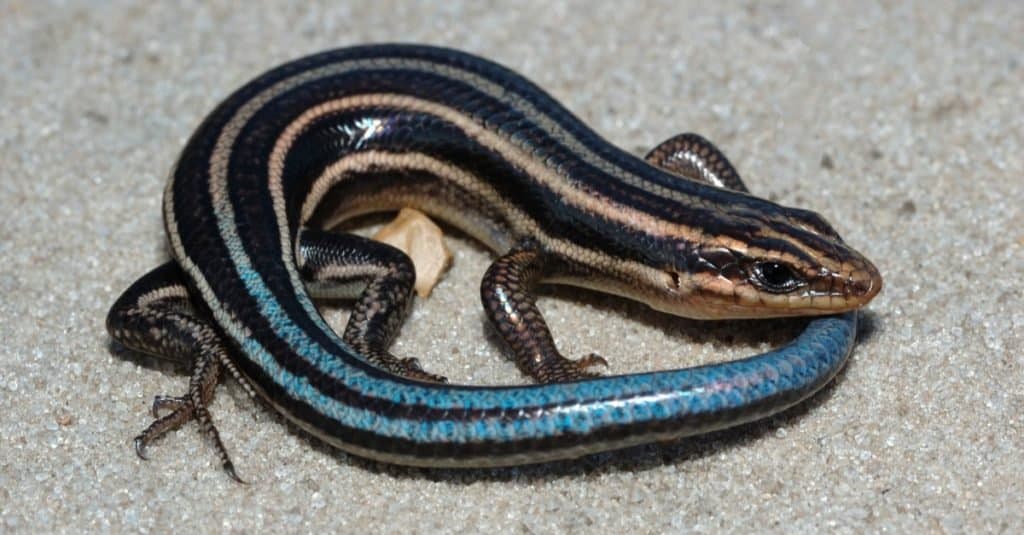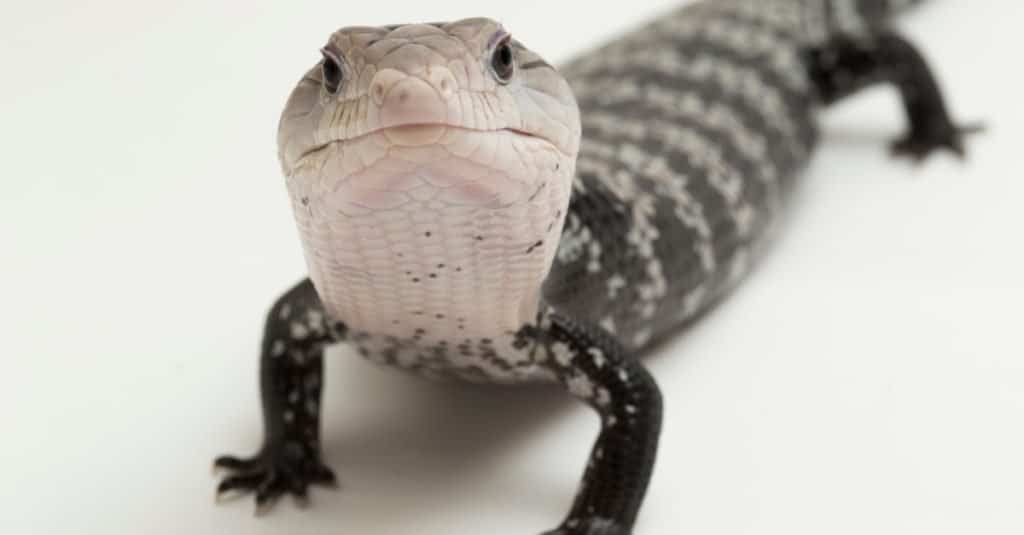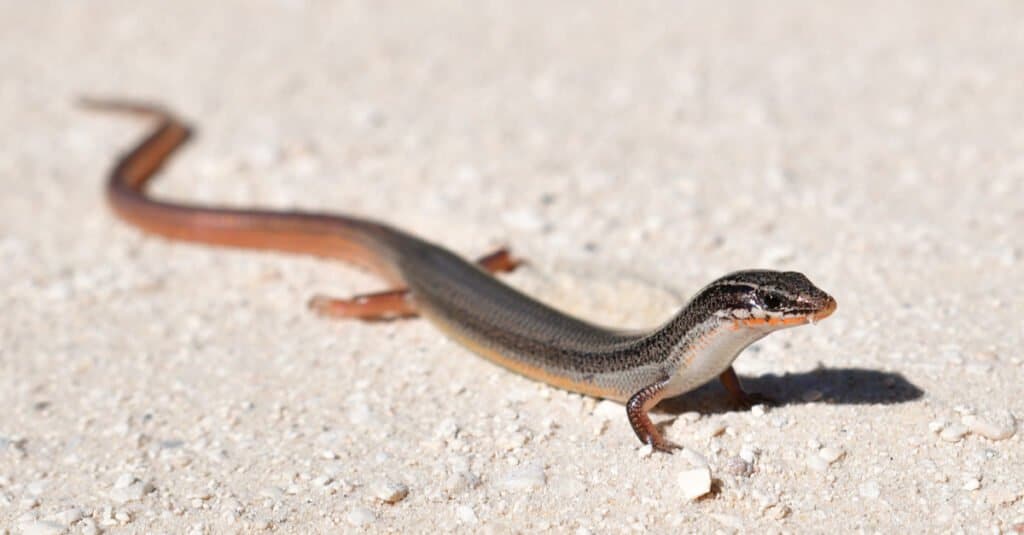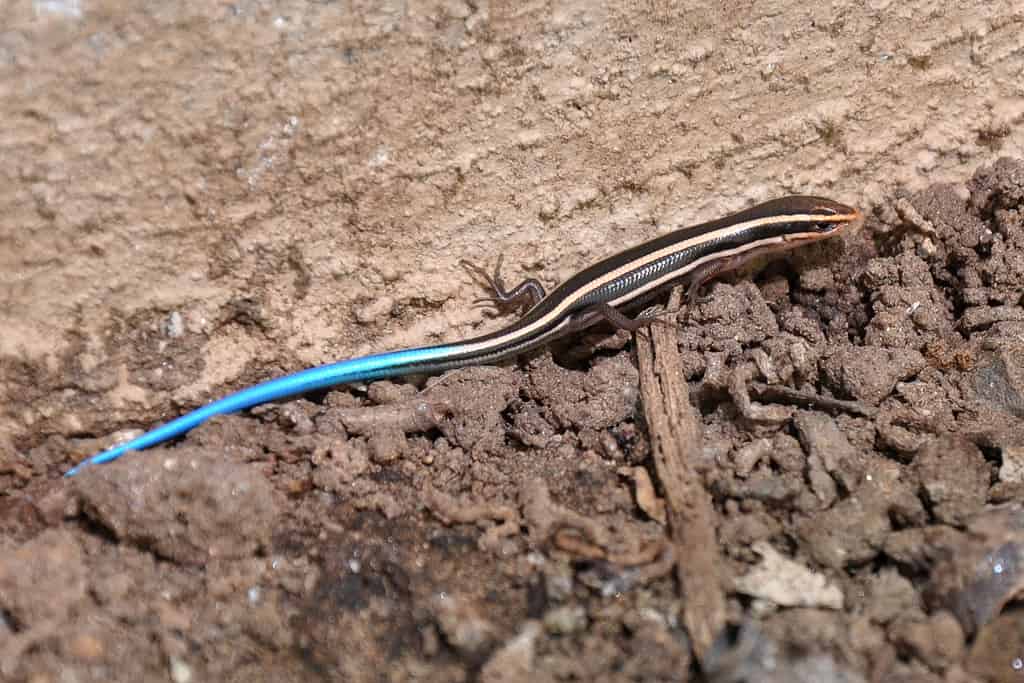Lizards live everywhere and are one of the most common reptiles you can come across. Currently, there are 4,675 species living in various habitats and terrains. Some species of lizards are very common while others lizards are distinctive and unique for their amazing features. One of these is the blue-tailed lizard. This species is however common in North America.
The blue-tailed lizards are known as skinks. Certain species of Plestiodon skinks have blue tails when young. The Western Skink (Plestiodon skiltonianus), and the five-lined skink (Plestiodon fasciatus) are also among the lizards with blue tails. Of course, it is hard to forget these lizards because of their bright blue tails, and a lot can be learned about this species.
So you might be wondering: what type of lizards with a blue tail are skinks and why do they have blue tails? Here is everything you need to know about the lizards with blue tails.
Lizards With Blue Tails

In North America, juvenile Western and five-lined skinks have bright blue tails.
©James DeBoer/Shutterstock.com
The Western Skink and American Five-lined Lined Skink lizards have blue tails and live in a large range within North America. Western Skinks are mostly found in the Western United States, but they also inhabit areas in British Columbia. Five-lined skinks live in similar habitats but have a range covering most of the Eastern United States.
Almost identical in appearance, the range of these species is helpful in identifying one from the other.
States with Western Skinks:
- California
- Utah
- Idaho
- Wyoming
- Montana
- Missouri
- Texas
- Washington
- Oregon
- Nevada
Both of these lizards are ground-dwelling and live in moist habitats. Open woodlands and forests with minimal vegetation are places they prefer to live. These lizards are active during the day and are often seen basking in the sun. However, during the winter months, they are inactive and hibernate until the spring.
Western Skinks Blue Tails and Other Characteristics
The Western Skink and the American five-lined Skink have blue tails only when young. As they age their tails lose their blue pigment and turn into a gray color. On average they grow around 4 to 8.5 inches long. Western skinks have broad stripes running down their back, with gray, brown, yellow, and black coloring. They also have glossy scales with a shiny look.
Five-lined skinks on the other hand are named after the five stripes that run down their back. Typically, their skin tone is brown, gray, and black. With time their lines fade, along with their bright blue tails. Older lizards can turn to be all brown. On the side of their head is a red marking that can help distinguish them from other skinks.
Are Skinks Dangerous

If skinks feel threatened, like when being picked up, they will bite.
©dwi putra stock/Shutterstock.com
No skink species is venomous, so being bit by one is not dangerous. A bite will only cause mild pain and discomfort. If skinks feel threatened, like when being picked up, they will bite. Wild skinks are more likely to bite than domesticated ones because the latter gets used to being handled.
If a skink is feeling threatened, you may notice one or more of these signs:
- Hissing
- Shaking
- A wide-open mouth
Being a distinctive species, skinks might come off as dangerous to many, however, they are generally harmless.
What Do Western Skinks Eat

The small skinks found in North America survive off a diet of insects and hunt to get their food. They are active during the day and will hunt during this period. Here are some of the insects a western skink feeds on:
Like other lizards, their tongues are used to smell the air and track nearby prey. They eat anything they come across, and most of the time they are awake is spent hunting. In captivity, they can be trained to feed on dead insects, but prefer to eat live food.
Are Skinks Common

Skinks belong to the family of Scincidae, which has around 1,300 species.
©Chase D’animulls/Shutterstock.com
The Western Skink and Five-lined skink have a healthy population within most of their range. However, the five-lined skinks have become endangered in Connecticut and Vermont. Habitat destruction and diseases are the main factors in why reptiles start to lose their population.
Even when abundant you may not even notice this lizard due to its small size. Skinks are a common lizard in the world and have about 1,275 different species. They are also commonly kept as pets because of their petite size and bright colors.
Why Do Some Skinks Have Blue Tails
Looking at the bright lizard with a blue tail of a young Western, or Five-lined skink you may think they are poisonous. Aposematic animals have brightly colored features to warn that they are dangerous. However, bright colors are not always a sign of danger.
Young skinks have bright blue tails to help defend themselves from predators. The bright blue diverts a predator’s attention and makes it more likely to attack the least vulnerable part of the lizard. When stressed or attacked this tail falls off and gives them a chance to escape. They are able to regrow their tail and avoid attacks on their head. Unfortunately, as they age they lose this bright coloring, and their tail turns gray.
Colors play an important role in the life of lizards. Some species of lizards like chameleons use colors to help communicate with others or blend into their habitat. Male lizards with the most bright colors increase their chances of finding a suitable mate. Skinks showcasing their blue tail is just another way lizards have evolved to utilize bright coloring.
What Attracts a Blue-Tailed Lizard?

If you want to draw skinks out of hiding, you should set up a light, whether a flashlight or a lamp, and place it close to the area they are sheltering in.
©Nathancourt, CC BY-SA 3.0 – License
Blue-tailed skinks are just like most lizards in that they are attracted to light, as well as shelter. If they are wild skinks that you do not wish to be in your home or on your property, or your beloved pets that may have wandered off, there are a few measures you can take.
In order to prevent them from being in your yard, you should make sure the area is neat and tidy, eliminating areas where they may seek shelter. If they are indoors and you want to draw them out of hiding, you should set up a light, whether a flashlight or a lamp and place it close to the area they are sheltering in. Another sure way to bring them out is by offering them food. This works best for your pet, where you can place a small bowl in their tanks, and fill it with their favorite tasty treats, like crickets.
The photo featured at the top of this post is © Kurit afshen/Shutterstock.com
Thank you for reading! Have some feedback for us? Contact the AZ Animals editorial team.






